Everyone loves a good fragrance, and with the right plants, you can create your own without any hassles. Whether you want to add fragrance to your home or are looking for an all-natural solution, fragrant plants are perfect. Choose the right type of flower for your needs to ensure that your home is scented with beauty all year round. Whatever scent you desire, there is a fragrant plant perfect for you.
10 best fragrant plants for indoors
Jasmine
Jasmine is the most popular fragrant flowering plant. The most popular type of Jasmine is the Jasmine sambac, which is used in perfumes and essential oils. If you’re interested in growing your Jasmine flowers, research the different types to choose the right one for your climate.
Types of Jasmine
The most common and well-known type is the Jasmine sambac. Other popular types include the Jasmine grandiflorum, Jasmine Officinale, and Jasmine auriculatum. Each type of Jasmine flower has its distinct fragrance, making them ideal for perfumes and scented products. Jasmine sambac is known for its sweet, heady scent, while Jasmine grandiflorum has a more floral aroma. Jasmine Officinale is said to have a more delicate fragrance, while Jasmine auriculatum has a rich, exotic scent.
Growing Jasmine indoors
Jasmine flowers are among the most popular and fragrant flowers in the world. They are loved for their beautiful smell and stunning appearance. Jasmine flowers can be white, pink, or purple in color. Jasmine plants prefer warm weather and lots of sunlight. They will need to do better in cold climates. Jasmine plants need well-drained soil that is high in organic matter. Add some compost or manure to your soil before planting Jasmine.
Next, determine where you want to place the Jasmine plants. You can either grow them in containers or on the ground. Plant the Jasmine seeds into the soil and cover them with plastic wrap. Water the plants often while growing; don’t allow them to dry out. Fertilize Jasmine plants every few weeks during the growing season with a balanced fertilizer. You can enjoy stunning Jasmine flowers all season long with just a little care.
Gardenia
Gardenia has a sweet fragrance that is perfect for adding a touch of fragrance to any room.
Types of Gardenias
There are many different Gardenia fragrances, each with a unique smell. The most common type of Gardenia fragrance is the White Gardenia, which has a strong, sweet smell. Other popular types include the Jasmine Gardenia, which has a softer, more floral scent, and the Orange Blossom Gardenia, which has a citrusy smell.
Growing Gardenia indoors
This beautifully fragrant flower is perfect for adding a bit of luxury and is relatively easy to care for. Gardenia prefers warm, humid climates. You can grow Gardenia indoors in an area with cooler winters. They’ll need bright, indirect light, and regular watering about once a week should suffice. To encourage blooming, fertilize your Gardenias every two weeks during the spring and summer months using an acidic fertilizer formulated for Azaleas.
Once the flowers start to fade, cut back on watering and fertilizing to prevent leggy growth. Gardenias are best pruned in late winter or early spring. Gardenias need plenty of nutrients to produce those beautiful blooms. Be sure to deadhead spent flowers promptly to encourage continued blooming. Gardenias can be temperamental, but with a little love and care, they will reward you with their stunning fragrance and blossoms.
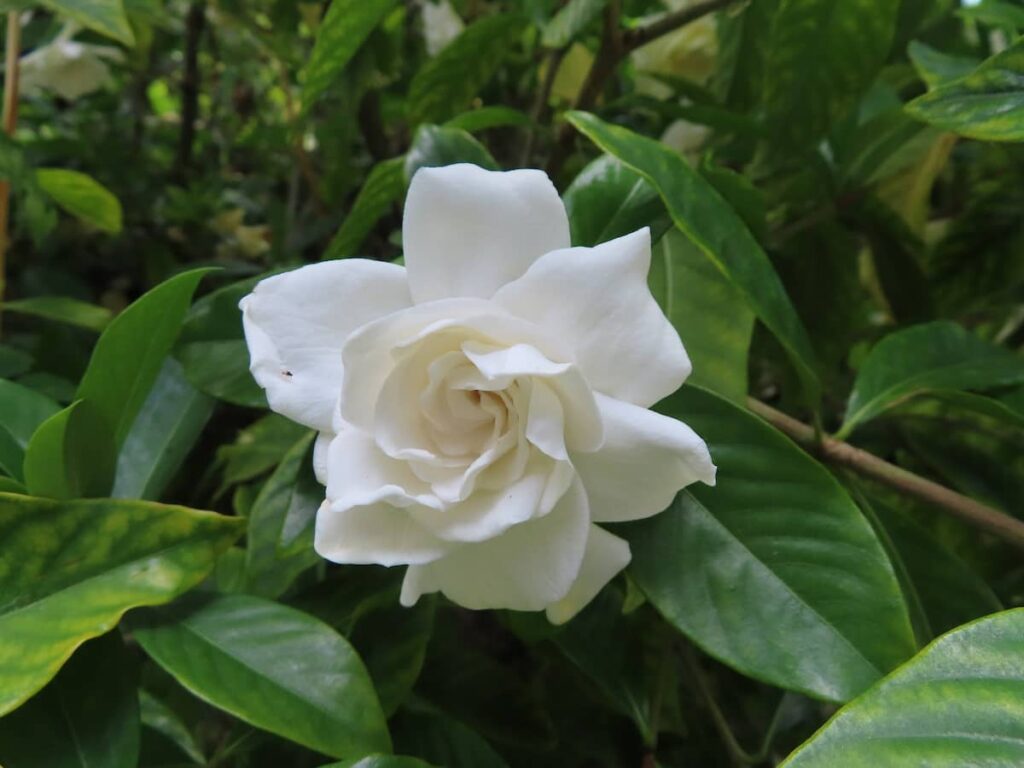
Plumeria
Plumeria may be the most beautiful fragrant plant you can grow indoors. These tropical flowers have an intoxicating fragrance that will make any room smell amazing. While they do require a bit of extra care, they are well worth the effort.
Types of Plumeria
You’ll need to choose a variety of Plumeria suited for indoor growing. Some good options include Kwanzan, Ruby Red, and Bali Hai. The fragrant Plumeria is a type of Plumeria that is known for its beautiful and fragrant flowers. The fragrant Plumeria can be grown in containers or on the ground.
Growing Plumeria indoors
There are many different ways to grow Plumeria, but the most important thing is to ensure that you have the right climate. Plumeria thrives in warm climates with plenty of sunlight. To start growing Plumeria from seed, sow the seeds in a well-drained potting mix. Cover the Plumeria seeds with sand or vermiculite and place them in a warm, sunny spot. Once the seedlings have sprouted, transplant them into larger pots filled with a good-quality potting mix.
Water regularly, and you should fertilize monthly with an all-purpose fertilizer. You can move your Plumeria plants outdoors when the weather is warm enough. Just be sure to acclimate them slowly to full sun exposure, so they don’t get sunburned leaves. Your Plumeria will bloom profusely from late spring through fall with proper care.
In case you missed it: 16 Best Outdoor Flowering Plants in India: How to Plant, Grow and Care
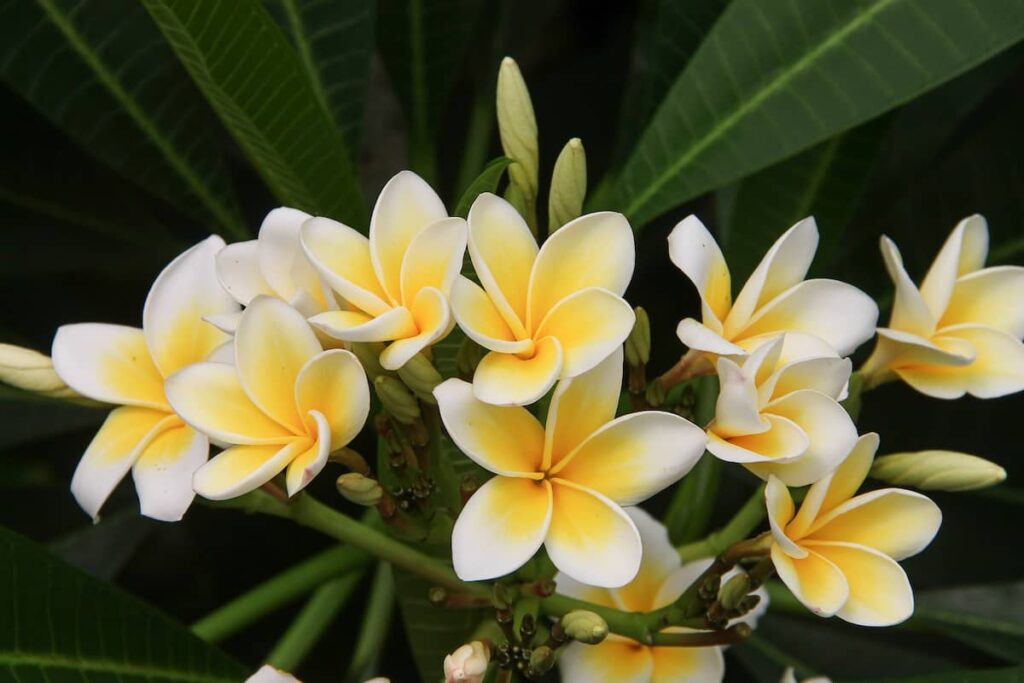
Citrus trees
Citrus trees are one of the best fragrant plants indoors. They are known for their strong citrus scent and ability to purify the air.
Types of citrus trees
There are many different types of fragrant citrus trees, each with its unique smell. The most common type of fragrant citrus tree is the orange tree. Other fragrant citrus trees include Lemon, Lime, Grapefruit, and Mandarin. Each type of tree has a different scent that can be used to make various products, including perfumes, soaps, and candles.
Lemon trees have a tart smell that is perfect for making cleaning products and adding flavor to food. Lime trees have a strong smell and are often used in cosmetics and cleaning products. Mandarin trees have a sweet smell that makes them perfect for use in perfumes and scented candles.
Growing citrus trees indoors
Citrus trees need full sun and well-drained soil. They should be fertilized regularly with a citrus fertilizer. Water them deeply but not too frequently; they don’t like wet feet. Prune them to encourage growth and keep them looking tidy. With a little care, you can grow fragrant citrus trees that will add a touch of sweetness to your home.
Lily of the Valley
If you love the smell of spring flowers, then the Lily of the Valley is the perfect plant for you. This delicate-looking plant is surprisingly hardy, and its small white flowers release a sweet fragrance with the scent of spring all year round.
Types of Lily of the Valley
There are two main types of Lily of the Valley plants: those with single and double flowers. The most common variety is the single-flowered Maids of Honor. This variety produces small, bell-shaped white flowers on 6–8-inch stems. The double-flowered Flore Pleno has puffy, white blooms that resemble miniature Roses.
Growing Lily of the Valley indoors
Lily of the Valley prefers partial shade and moist, well-drained soil. It’s best to plant Lily of the Valley in a shady spot if you live in an area with hot summers; that will protect it from the afternoon sun. These plants are relatively low maintenance and can spread rapidly through runners (or offsets), so give them plenty of room to grow. To propagate Lily of the Valley, divide established clumps in early fall or late winter/early spring.
Each division should have at least 3 or 4 leaves and a few roots attached. Lily of the Valley is a highly sought-after plant due to its fragrant and beautiful blooms. Find a spot in your garden that gets partial sun to full shade. You should prepare the soil by adding compost or manure. This will help the plant roots establish themselves and also hold moisture better. Plant the bulbs and remove slugs and snails, which can damage the leaves. Handpick them off if you see any.
In case you missed it: 14 Self-Seeding Flowers: Why They are Great for Your Backyard Garden
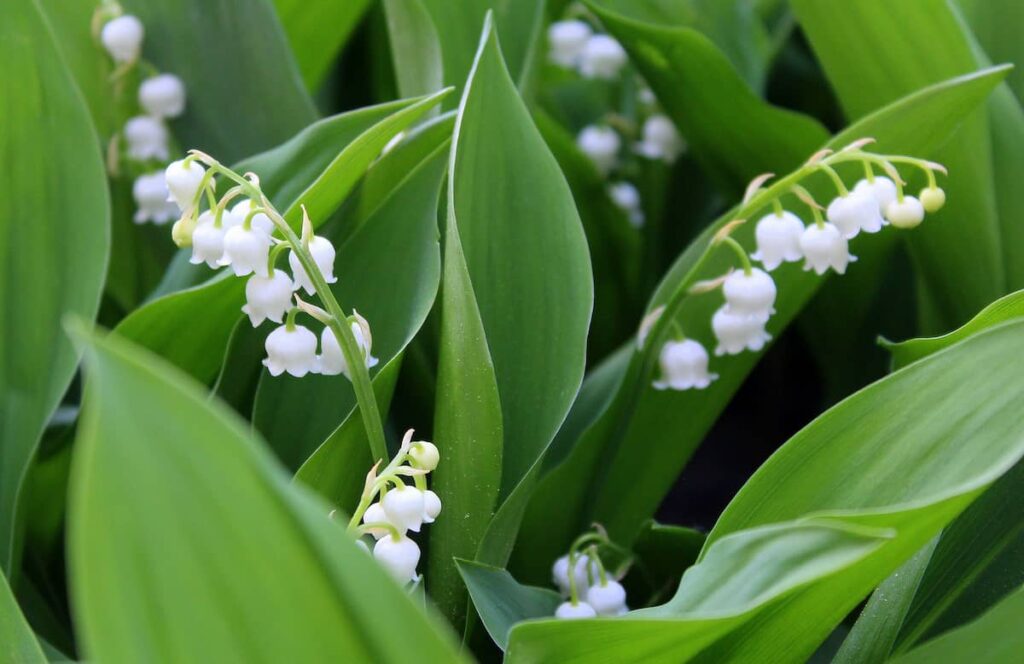
Rose
Roses are one of the most popular fragrant plants, and for a good reason. They have a beautiful, classic fragrance that is instantly recognizable.
Types of Roses
- Bourbon Rose – This type of Rose has a sweet, fruity fragrance.
- Damask Rose – This type of Rose has a strong, sweet fragrance.
- Tea Rose – This type of Rose has a light, delicate fragrance.
- Hybrid Tea Rose– This Rose has a strong, sweet fragrance.
Growing Roses indoors
To grow Roses indoors, you should remember a few things. First, they need a lot of sunlight, so choose a spot near a window where they will get at least six hours of direct sunlight daily. Second, they need well-drained soil, so plant them in a pot with drainage holes. Third, they must be watered regularly, especially during the summer when they are actively growing. Lastly, don’t forget to deadhead the spent blooms to encourage more flowers.
Sweet Pea
Sweet Peas has a beautiful fragrance and make a great addition to any indoor garden. They are climbing plants, requiring a trellis or an empty wall. Sweet Peas are relatively easy to grow and don’t require much maintenance.
Types of Sweet Peas
There are many varieties of Sweet Peas, each with its unique fragrance. The most popular varieties include the English Sweet Pea, the French Sweet Pea, and the Italian Sweet Pea. Each of these varieties has a different scent and can be grown in different parts of the world.
The English Sweet Pea has a strong fragrance that is often described as similar to Roses. The French Sweet Pea is another popular variety. It has a delicate fragrance that is often compared to vanilla or almond extract. The Italian Sweet Pea is a less common variety. It has a strong, spicy fragrance that some people compare to Cloves.
Growing Sweet Peas indoors
When planting Sweet Peas, choose a location with full sunlight and well-drained soil. Next, you’ll need to plant your seeds about 1 inch deep and space them about 2 to 3 inches apart. Support them as your Sweet Peas grow by building a trellis or other structure. This will help keep the plants from becoming too leggy.
Deadhead regularly to encourage more blooms. Water regularly and deeply, especially during hot, dry weather. Sweet Peas prefer moist soil, so don’t let them dry out. Fertilize every 2-3 weeks with a water-soluble fertilizer designed for flowers. This will give them the necessary nutrients to grow strong and produce many flowers.
Orchids
Orchids are the most popular houseplants and for a good reason. These exotic beauties are relatively easy to care for and come in various colors, sizes, and shapes.
Types of Orchids
Phalaenopsis (Moth Orchid) is one of the most popular Orchids; Phalaenopsis are known for their striking flowers. Some varieties are fragrant, with a sweet floral scent especially pronounced in the evening. Cattleya Orchids are some of the largest and most showy, with flowers reaching up to 8 inches across. Some varieties are quite fragrant, with a strong floral scent that can be overwhelming in large spaces. Oncidium Orchids are characterized by their sprays of small, brightly-colored flowers. Many of these plants are quite fragrant, with a sweet vanilla-like scent.
Growing Orchids indoors
Orchids come in many colors and varieties and can repeatedly bloom with proper care. Choose the right type of Orchid. There are many different types of Orchids, so selecting one that will do well in your climate and environment is important. Give them plenty of light. Orchids need bright, indirect sunlight to bloom.
Water your Orchids about once a week. Between watering, allow the potting mix to dry out slightly. Fertilize them monthly. You should use a balanced fertilizer designed for Orchids and follow the manufacturer’s directions. Orchids need good air circulation around their leaves and roots to stay healthy.
In case you missed it: Cool-season Plants for Pollinators: Vegetables, Flowers, Fruits, Shrubs, and Herbs

Carnation
Carnations are one of the best fragrant plants indoors. They have a strong, sweet fragrance that will fill any room. Carnations are also very easy to care for and can be found in various colors.
Types of Carnations
Carnations come in many colors and also come in a variety of shapes and sizes. The most popular Carnations are the large-flowered varieties, which can reach up to 10 inches in diameter. Miniature Carnations are another popular type of Carnation. These flowers are much smaller than their large-flowered cousins, but they still pack a punch in fragrance and color.
Growing Carnations indoors
You should consider a few things if you’re interested in growing Carnations. First, Carnations are not difficult to grow. They will grow well in almost any type of soil with proper care. Second, Carnations require full sun to bloom well. If you live in an area with hot summers, you should plant it in an area that gets some afternoon shade is best.
Third, Carnations are heavy feeders. They need regular applications of fertilizer to produce lots of flowers. When planting Carnations, be sure to space them about 12 inches apart. Once your plants are established, deadhead spent flowers regularly to encourage new blooms.
In case you missed it: 16 Fragrant Spring-flowering Shrubs: How to Grow, Planting, and Care
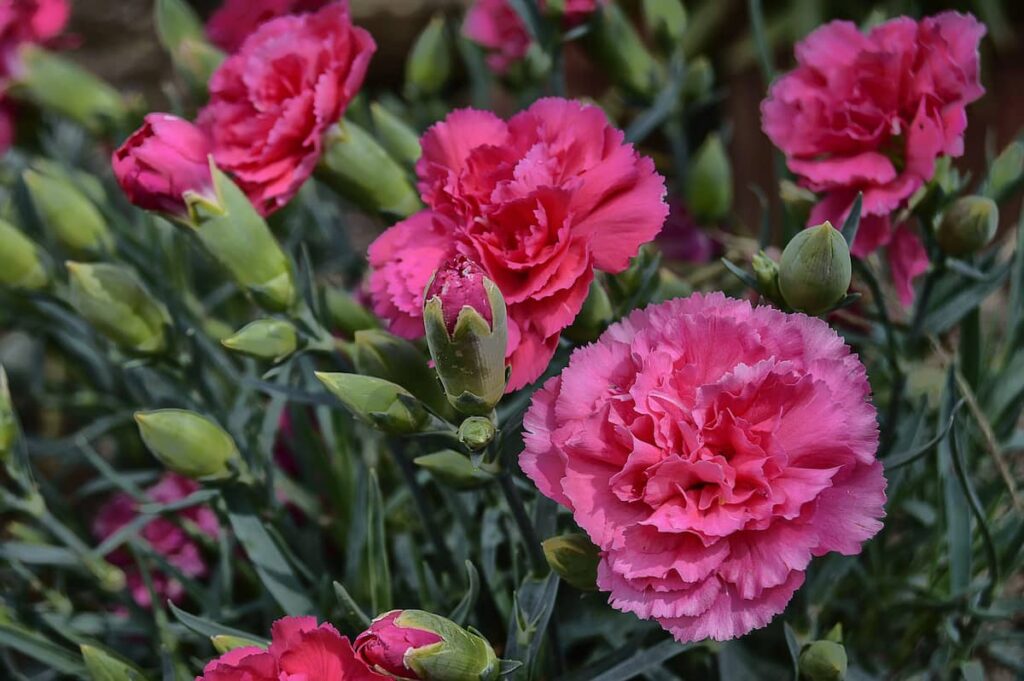
Freesia
Freesias are one of the best fragrant plants indoors. They have a strong, sweet fragrance that will fill any room.
Types of Freesias
There are many types of Freesias, each with its distinct fragrance. Some popular varieties include the Snow Fairy, the White Swan, and the Bluebell. There are many types of Freesias, each with its distinctive fragrance. You can grow them in any climate if you provide a sunny spot and well-drained soil. Freesias require little care once established, but periodic watering is important to keep the plants in good condition.
Growing Freesias indoors
First, choose a location with good sunlight and plenty of moisture. Free-standing Freesias need at least six hours of sunlight daily, while those in pots will do just fine with three or four. Second, begin by planting your bulbs directly into the soil in the springtime. Make sure to water them regularly throughout the growing process, and wait until they have fully formed before harvesting your flowers.
In case you missed it: How to Create a Beautiful Flower Garden in the Balcony
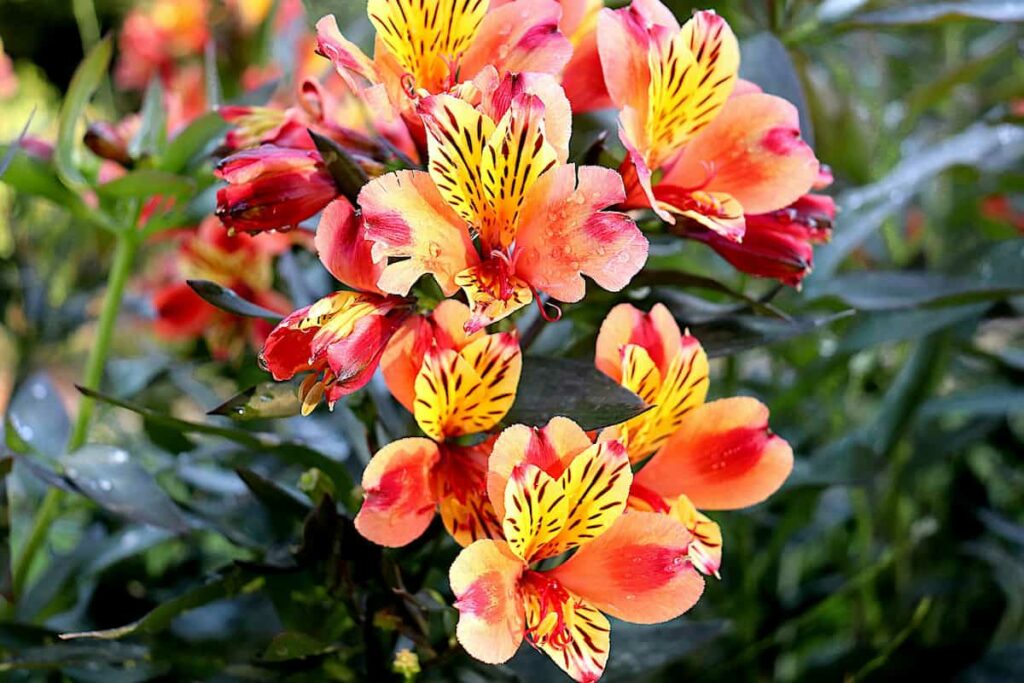
Conclusion
Many different fragrant plants can be grown indoors, each with its unique scent. These plants smell great and look beautiful, adding a touch of elegance to any room. With patience and suitable conditions, you will get fragrance all year from these plants.
- How to Grow Hibiscus from Flower
- Plantation Ideas for Home Decoration: A Beginners Guide
- Flower Garden Designs and Layouts for Beginners
- Planting and Spacing Techniques in Papaya: A Beginner’s Guide
- Growing Gold: Essential Techniques for Planting Pineapples
- How to Make Kalanchoe Plant Bushy: Home Remedies and Solutions
- 11 Reasons Why Your Gardenia is Not Blooming: Home Remedies and Solutions
- Eco Elegance: The Guide to Designing a Drought-Tolerant Landscape
- Gardening on a Slope: Strategies for Hillside Landscaping
- Nourish and Flourish: Top Organic Mulches for Thriving House Plants
- Everything You Want to Know about Indian Mogra Flower: Discover Uses and Growing
- Green Thumb Success: Expert Tips for Cultivating Greenhouse Pumpkins All Year Round
- Maximize Growth & Flavor: The Ultimate Guide to Companion Planting in Herb Gardens
- How to Control Rhododendron Problems Naturally: Home Remedies and Organic Ways to Fix Them
- Natural Magic: The Remarkable Benefits of Cinnamon for Plants
- Best Steps to Revive Dying Tulip with Natural and Organic Treatment
- 10 Reasons Why Your Angel Trumpet is Not Blooming: Remedies and Treatment
- How to Fix Periwinkle Leaf and Flower-Related Problems: Natural Remedies and Solutions
- How to Fix Zinnias Leaf and Flower Problems: Discover Natural and Home Remedies
- Organic Steps to Induce Lemon Tree Flowers: A Comprehensive Guide
- Bloom Booster: Crafting the Perfect Homemade Bougainvillea Fertilizer
- Optimizing Growth: A Guide to Applying NPK Fertilizer for Potted Plants
- 10 Best Homemade Fertilizers for Rubber Plant: DIY Recipes and Application Method
- How to Boost Female Pumpkin Flowers: Effective Steps for More Flowers and High Yields
- Transform Your Indoor Garden: Top Benefits of Pink Salt for Houseplants
- 10 Best Homemade Fertilizers for Peacock Plants (Calathea): Easy DIY Guide
- Unlock Blooms: 9 Reasons Why Your Potted Chrysanthemum is Not Blooming
- 8 Reasons Why Your Potted Hibiscus is Not Blooming: Fix it with Simple Solutions
- Unlock Blooms: 9 Key Reasons Your Potted Frangipani Won’t Flower
- 10 Reasons Why Is My Ice Plant Not Blooming: Remedies and Treatment
- 10 Reasons Why My Potted Hydrangea Not Blooming: Treatment and Remedies
- 10 Reasons Why is My Wisteria Not Blooming: Remedies and Treatment
- 10 Reasons Why is My Goldfish Plant Not Blooming: Remedies and Treatment
- Maximize Your Space: Ultimate Guide to Balcony Gardening with Grow Bags
- 10 Reasons Why Your Iris is Not Blooming: Remedies and Treatment
- 10 Reasons Why Your Anthurium Plant is Not Blooming: Treatment and Remedies